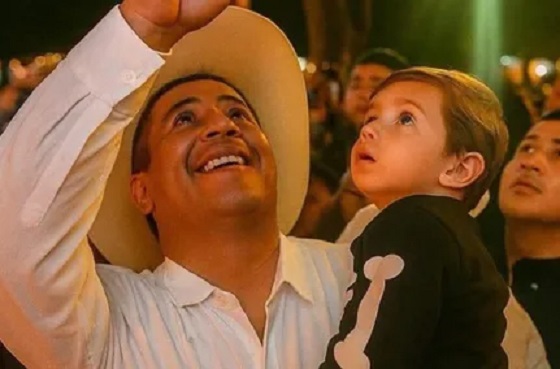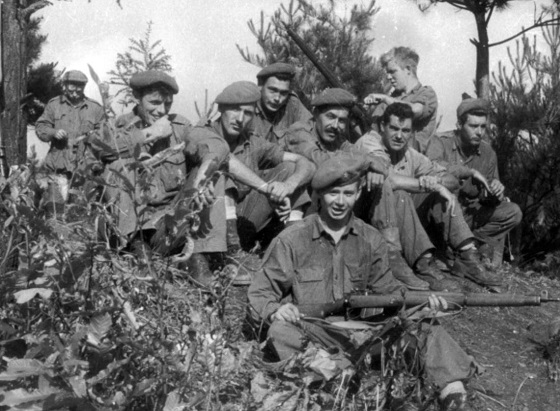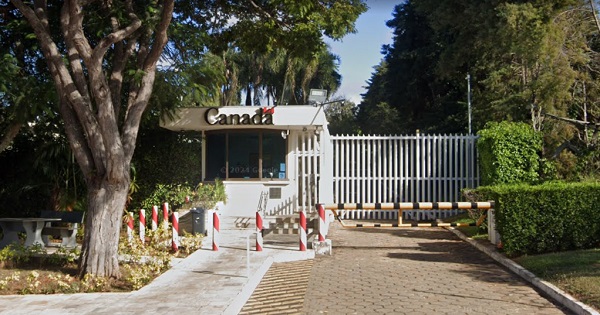Crime
Yesterday my sister was brutally assaulted by two women

This is posted with permission from Nicole Safron. Her sister survived a terrifying experience at their home near Sylvan Lake this week.
Following Nicole’s post is the RCMP report to the media on the alleged crime(s)
Yesterday my sister was brutally assaulted by two women
These women had been dropped off in front of her garage with a blue bag by a green ford truck. My sister who was upstairs in her home with her daughter and newborn baby looked out the window to see the girls jump out of the vehicle and the truck take off through her fence across the canola field.
She immediately called her husband and then a neighbor who is about a mile and a half away who could be there as soon as possible. JUST a week prior to this, a man walked into her home in broad daylight asking where Evergreen hall was, and later arrested (and is known to police) so she was taking it seriously. She got off the phone with her husband who called 911 for her at 8:44 am to dispatch police to her. She then activated her alarm system which has a loud outdoor siren to hopefully scare them away. The pair fled on foot towards the road. My sister, left her kids upstairs in the house (thankfully) locked the house and followed the girls to the end of the driveway in her car, while on the phone with my dad, to ensure she knew where the girls were. The neighbor got there at the same time and the girls were laying in the grass with the blue bag.
Meanwhile the green truck was speeding across the fields towards my other sisters home going through the fences. So the neighbor decided it would be good to make sure she was ok as well. She was still on the phone with my dad in her SUV when the girls attacked her punching her in the face and ripping her out of her vehicle. with my dad helpless on the other line.
The girls were kicking and punching her and telling her they were going to shoot her in the face. My sister was pleading for her life telling them she has a newborn baby and children and to take her car. My sister was fighting for her life in a ditch in rural Alberta wile my dad listened on the phone knowing anything could happen to his daughter.
The girls then got into my sisters vehicle and tore off towards highway 11, erratically driving down the wrong side of the highway at 160 km/hr + into oncoming traffic.
Meanwhile the truck that had crashed through the fences had caught fire behind my other sisters home after driving about 3/4 of a mile through fences and crop. The men in the truck had fled on foot. One of them stealing a vehicle from the neighbors down the road.
It was not until aprox 9:37am when the first police showed up out there.
My sister who was attacked did not see an officer until after 10:00am.
The reason I am writing this out in detail is to bring awareness to the crisis that we are facing in central Alberta with crime and drug related issues and thefts. Rurally it takes oficers time to get to victims. There are no other houses and rarely are others home. It is a hopeless feeling and people are scared to be home.
This is beyond petty theft. This is peoples lives and families at risk. You better believe what both my sister and my dad experienced yesterday will stick with them for years to come.
There is a meeting on Thursday November 7th from 6pm to 8pm in Rocky mountain house at the Lou Soppit centre with Doug Schweitzer, the minister of justice. I would encourage anyone who can to attend, in addition to writing a letter to your MLA. Honorable Jason Nixon has been outstanding with this situation contacting the family shortly after the events to discuss.
Lets send him the tools he needs to make a change. We need these drug houses wiped out. In ALL of ALBERTA. Central and rural Alberta is getting scary. These people need to be locked up. Both of these women had been arrested before and are known to police. They get released in a few days and have nothing to loose. I feel sorry for our police forces when they try and help us and the criminals are released within days!
They are dangerous.
I know I am speculating / putting the puzzle pieces together, however, those women had the intent of an armed robbery at my sisters home that morning. Armed and planned. Perhaps another vehicle would come and pick them up or they would meet the ford in the field.
But what I do know is that I am thankful Jolene was able to keep them away from her home, and her children did not have to witness anything.
You better believe they would have got into her home in the hour it took police to arrive. Or that our neighbor or my father would be in the wrong for trying to protect her.
And it may have been a different story entirely.
- Truck left by intruders
- Fence ruined as intruders excaped
- Guns recovered by police
From Sylvan Lake RCMP:
The RCMP have laid charges against two females following several incidents that began with a complaint of suspicious females in Sylvan Lake and finished with a collision in Red Deer.
On October 23 at 8:48 a.m., Sylvan Lake RCMP responded to a rural complaint, that two females, believed to be intoxicated, were in a ditch. They were allegedly dropped off by a male driving a truck and that truck had driven through a fence. Property representatives in the area were taking steps to identify and detain the females. The truck, later identified as a 1997 Ford F150, was abandoned in a nearby field, on fire. Eckville Fire department attended and assisted with extinguishing the vehicle fire.
Sylvan Lake RCMP received a further update that one female property representative had been assaulted and had her vehicle, a Dodge Durango, stolen. RCMP Police dog services, Rocky Mountain House RCMP, and RCMP air services were deployed to the location to assist.
A short time later the Dodge Durango was observed travelling at a high rate of speed eastbound on Highway 11. The vehicle entered Red Deer. (see background media release).
Sylvan Lake RCMP later recovered the Ford F150, which had been stolen out of the Rocky Mountain house area. Two prohibited firearms were located, abandoned, in the area.
A second vehicle, a 2007 grey Chevrolet Silverado was stolen from a nearby residence and remains outstanding. The RCMP believe that the male who dropped off the suspect females stole the Silverado from an area property.
Sylvan Lake RCMP have charged Chelsea Crowley (27) and Brianna Crookedlegs (20) with the following offences:
– 2 counts of Possession of a Prohibited Weapon
– 2 counts of Possession of a weapon for a Dangerous Purpose
– 2 counts of Possession of Weapon without holding a licence
– 2 counts of Possession of a Prohibited or Restricted Firearm
– 1 count of Robbery
Crowley faces an additional five counts of Breach of Recognizance. Both females are scheduled for a Judicial Interim Release hearing on October 28.
Investigation into the circumstances of the recovered Ford F150 and the theft of the 2007 grey Chevrolet Silverado continues. The Silverado is described as grey, with black rims, a small push bar on the front and small dents.
If you have any information about these incidents, or information on the location of the stolen Chevrolet Silverado please contact the Sylvan Lake RCMP at 403-858-7200. If you wish to remain anonymous, you can contact Crime Stoppers at 1-800-222-8477 (TIPS), online at www.P3Tips.com or by using the “P3 Tips” app available through the Apple App or Google Play Store.
Crime
Public Execution of Anti-Cartel Mayor in Michoacán Prompts U.S. Offer to Intervene Against Cartels

“I don’t want to be just another mayor on the list of those executed”
On the first night of November, during Day of the Dead celebrations, the independent, anti-cartel mayor of Uruapan in Michoacán, Carlos Manzo, was assassinated in the heart of his city during a public festival. His bloody murder has underscored the deadly risks faced by local officials who may lack adequate protection from a state that critics say is corroded by corruption and penetrated by powerful cartel networks that, in some regions, have supplanted government authority. The killing intensifies urgent questions about political and police corruption, cartel impunity, and the scope of U.S.–Mexico security cooperation — with a response from the U.S. State Department today offering to “deepen security cooperation with Mexico.”
Manzo, a fiercely outspoken anti-cartel mayor who took office in 2024 as Uruapan’s first independent leader, was gunned down as he stood before crowds at the annual Day of the Dead candlelight celebration. Witnesses said gunfire erupted shortly after Manzo appeared onstage, holding his young son moments before the attack. The festival, known locally as the Festival de las Velas, drew hundreds of families to Uruapan’s central plaza — now transformed into the scene of Mexico’s latest high-profile political assassination, and a catalyst for nationwide outrage, as online protests surged and citizens called for demonstrations against cartel violence.
According to early reports, at least two suspects have been detained and one attacker was killed on site. Authorities asserted — despite the success of the attack — that Manzo had been under National Guard protection since December 2024, with additional reinforcements added in May 2025 following credible threats to his life.
In Washington today, the killing drew political reaction. “My thoughts are with the family and friends of Carlos Manzo, mayor of Uruapan, Michoacán, Mexico, who was assassinated at a public Day of the Dead celebration last night. The United States stands ready to deepen security cooperation with Mexico to wipe out organized crime on both sides of the border,” Deputy Secretary of State Christopher Landau, the former U.S. ambassador to Mexico, said in a statement shared online.
Federal Security Minister Omar García Harfuch said the gunmen “took advantage of the vulnerability of a public event” to carry out the attack, despite a standing security perimeter.
President Claudia Sheinbaum condemned the killing as a “vile” assault on democracy and vowed there would be “zero impunity.” Her administration convened an emergency security meeting and pledged that the investigation would reach the “intellectual authors” of the crime. Yet the murder has already ignited outrage across Mexico over the government’s failure to protect local officials in cartel-dominated states such as Michoacán, where extortion, assassinations, and territorial disputes continue to erode basic governance.
Manzo had publicly warned of his fate. “I don’t want to be just another mayor on the list of those executed,” he said earlier this year, as he pressed the federal government for better coordination between municipal and military authorities. For years, Uruapan — an agricultural and trade hub in western Mexico — has been the site of deadly clashes between the Jalisco New Generation Cartel and remnants of the Knights Templar Organization, both vying to control lucrative extortion and drug routes.
The killing of Manzo fits a dark and familiar pattern. In 2025 alone, several mayors in Michoacán, Guerrero, and Tamaulipas have been killed in attacks widely attributed to organized-crime groups. In June, the mayors of Tepalcatepec and Tacámbaro were ambushed and slain while traveling in official convoys. More than 90 local officials have been murdered since 2018 — a rate that analysts say reflects how cartels target municipal governments to ensure political control over territories tied to narcotics, mining, and agriculture. Uruapan, at the heart of Mexico’s avocado belt, is a strategic prize for the cartels that tax every shipment leaving the region.
The mayor’s death also recalls earlier tragedies that scarred the nation. In 2012, Dr. María Santos Gorrostieta Salazar, the former mayor of Tiquicheo, was abducted and murdered after surviving two assassination attempts and defying cartel threats. Her death became emblematic of the dangers faced by reformers who refuse to cooperate with criminal groups. More than a decade later, Manzo’s murder illustrates that little has changed — except the brazenness of the attackers, now willing to strike in front of cameras and families celebrating one of Mexico’s most sacred holidays.
The killing has also reignited long-standing U.S. frustration over Mexico’s inability to stem cartel violence, even as the Trump administration has expanded counter-narcotics operations at the border. Under Trump’s renewed directives, the U.S. has classified several Mexican cartels as foreign terrorist organizations and empowered the Pentagon to develop strike options against high-value targets abroad. A September 2025 joint statement between Washington and Mexico City pledged deeper intelligence sharing and cross-border enforcement initiatives, including efforts to halt arms trafficking southward.
However, Mexico’s government remains deeply wary of any U.S. military involvement on its soil. President Sheinbaum has warned that “Mexico will not stand for an invasion in the name of counter-cartel operations,” rebuffing Republican calls for unilateral action. Her position lays bare a long-standing tension between Mexico’s need for U.S. support and its insistence on sovereignty — a fault line that Manzo’s killing has reignited.
The Bureau is a reader-supported publication.
To receive new posts and support my work, consider becoming a free or paid subscriber.
Crime
Canada Seizes 4,300 Litres of Chinese Drug Precursors Amid Trump’s Tariff Pressure Over Fentanyl Flows

In what appears to be the second-largest Chinese precursor-chemical seizure in British Columbia in the past decade, Canadian border and police officials announced they intercepted more than 4,300 litres of chemicals used to manufacture fentanyl and other synthetic drugs at a notoriously troubled port in Delta, B.C.
The announcement of a seizure that occurred in May 2025 comes amid President Donald Trump’s continuing pressure on Ottawa to crack down on fentanyl trafficking in the province — which U.S. officials say has become a key production and shipment point for Chinese and Mexican traffickers.
The seizure — announced jointly by the Canada Border Services Agency (CBSA) and the RCMP — underscores the scale and persistence of global trafficking networks funnelling illicit materials into Canada’s drug markets.
According to the agencies, border officers examined two marine containers that arrived from China in mid-May, both bound for Calgary, Alberta. Acting on intelligence developed by CBSA’s Pacific Region, officers discovered 3,600 litres of 1,4 Butanediol, a key ingredient for producing GHB, often known as the “date-rape drug”; 500 litres of Propionyl Chloride, a chemical precursor used to synthesize fentanyl; and 200 litres of Gamma Butyrolactone (GBL), another controlled intoxicant.
The chemicals were concealed inside 60 clear jugs and 20 blue drums within the containers. Investigators believe the shipment was intended for use in clandestine drug laboratories. The RCMP confirmed that an investigation into the importation network remains ongoing.
The seizure comes amid growing concern about Canada’s port security, particularly in Metro Vancouver, where experts and local officials say criminal networks are exploiting gaps in federal enforcement.
The Delta seizure follows a series of major CBSA operations targeting precursor chemicals at Pacific ports. In May 2022, CBSA officers in the Metro Vancouver District examined a container from China declared as “toys” and discovered 1,133 kilograms of the fentanyl-precursor chemical Propionyl Chloride, with the potential to produce more than a billion doses of fentanyl.
Public Safety Canada also reported that in the first half of 2021, CBSA seized more than 5,000 kilograms of precursor chemicals, compared with just 512 kilograms in 2020 — reflecting what officials called a “dramatic escalation” in attempts to smuggle fentanyl inputs into the country.
In 2023, the City of Delta released a report highlighting major vulnerabilities at port terminal facilities, warning that there is “literally no downside” for organized criminals to infiltrate port operations. The report noted that British Columbia’s provincial threat assessment rated ports as highly susceptible to corruption and organized-crime infiltration.
At the time, Delta Mayor George Harvie called the lack of a dedicated national port-policing force “a threat to national security.” In comments to the Canadian Press, Harvie said that while Canada’s ports fall under federal jurisdiction, the “total absence of uniformed police at the facilities makes them obvious targets for criminal elements — from Mexican drug cartels to biker gangs.”
“We’re witnessing a relentless flow of illegal drugs, weapons and contraband into Canada through our ports, and that threatens our national security,” Harvie said.
The Port of Vancouver complex, which includes major terminals in Delta, Surrey, and Vancouver, handles roughly three million containers annually, with millions more expected as port expansion plans move forward.
The Delta report reiterated how difficult it has become to police these sprawling operations since the Ports Canada Police were disbanded in 1997. More than a quarter-century later, Harvie said, the consequences of that decision are now “alarmingly clear.”
The CBSA announcement today comes as U.S. President Donald Trump has imposed tariffs on Canadian exports, accusing Ottawa of failing to interdict the flow of fentanyl and precursor chemicals trafficked through British Columbia ports. Washington has repeatedly pressed Canada to strengthen port enforcement and anti-money-laundering controls, citing the West Coast’s role in China- and Mexico-linked trafficking networks.
Simultaneously, in trade negotiations with Beijing, Mr. Trump announced a reduction in tariffs tied to the fentanyl supply chain — raising concern that Washington has eased pressure on China, the primary source of finished fentanyl now responsible for hundreds of thousands of overdose deaths across North America.
Subscribe for free to receive new posts and support my work.
For the full experience, please upgrade your subscription and support a public interest startup.
We break international stories and this requires elite expertise, time and legal costs.
-

 Business2 days ago
Business2 days agoCarney budget continues misguided ‘Build Canada Homes’ approach
-

 Business2 days ago
Business2 days agoCarney budget doubles down on Trudeau-era policies
-

 Business1 day ago
Business1 day agoBill Gates Gets Mugged By Reality
-

 armed forces1 day ago
armed forces1 day agoIt’s time for Canada to remember, the heroes of Kapyong
-

 COVID-192 days ago
COVID-192 days agoCrown still working to put Lich and Barber in jail
-

 Alberta1 day ago
Alberta1 day agoAlberta’s number of inactive wells trending downward
-

 Censorship Industrial Complex24 hours ago
Censorship Industrial Complex24 hours agoSchool Cannot Force Students To Use Preferred Pronouns, US Federal Court Rules
-

 Alberta24 hours ago
Alberta24 hours agoAlberta Announces Members of Class Size and Complexity Committee















